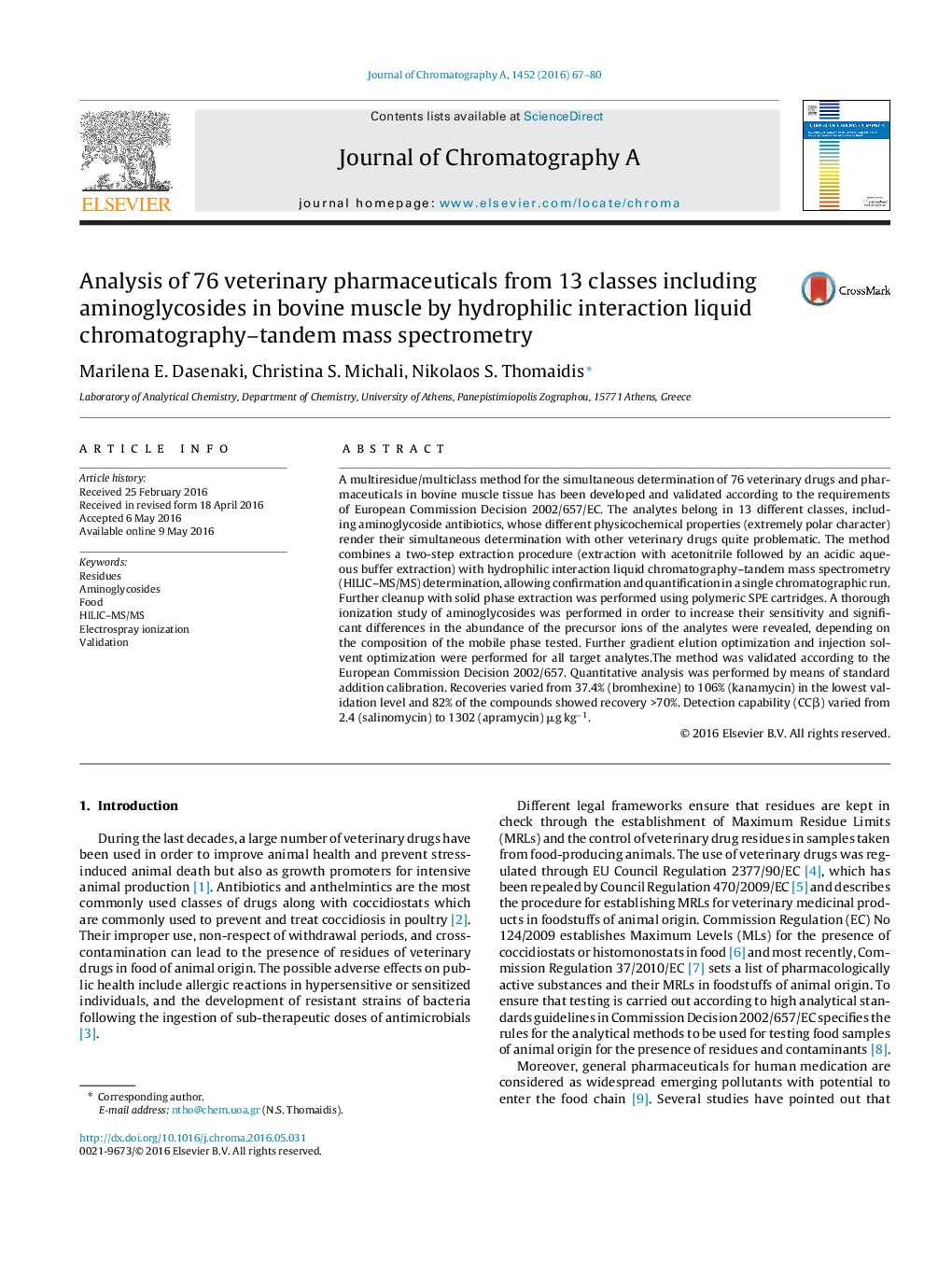| کد مقاله | کد نشریه | سال انتشار | مقاله انگلیسی | نسخه تمام متن |
|---|---|---|---|---|
| 1198840 | 1493474 | 2016 | 14 صفحه PDF | دانلود رایگان |
• A HILIC–MS/MS method for the determination of veterinary drugs in muscle is presented.
• The multiresidue method comprises analytes from 13 classes, including aminoglycosides.
• Aminoglycosides’ ionization study led to significant enhancement of their sensitivity.
• The method was optimized and validated according to Commission Decision 2002/657/EC.
A multiresidue/multiclass method for the simultaneous determination of 76 veterinary drugs and pharmaceuticals in bovine muscle tissue has been developed and validated according to the requirements of European Commission Decision 2002/657/EC. The analytes belong in 13 different classes, including aminoglycoside antibiotics, whose different physicochemical properties (extremely polar character) render their simultaneous determination with other veterinary drugs quite problematic. The method combines a two-step extraction procedure (extraction with acetonitrile followed by an acidic aqueous buffer extraction) with hydrophilic interaction liquid chromatography–tandem mass spectrometry (HILIC–MS/MS) determination, allowing confirmation and quantification in a single chromatographic run. Further cleanup with solid phase extraction was performed using polymeric SPE cartridges. A thorough ionization study of aminoglycosides was performed in order to increase their sensitivity and significant differences in the abundance of the precursor ions of the analytes were revealed, depending on the composition of the mobile phase tested. Further gradient elution optimization and injection solvent optimization were performed for all target analytes.The method was validated according to the European Commission Decision 2002/657. Quantitative analysis was performed by means of standard addition calibration. Recoveries varied from 37.4% (bromhexine) to 106% (kanamycin) in the lowest validation level and 82% of the compounds showed recovery >70%. Detection capability (CCβ) varied from 2.4 (salinomycin) to 1302 (apramycin) μg kg−1.
Journal: Journal of Chromatography A - Volume 1452, 24 June 2016, Pages 67–80
